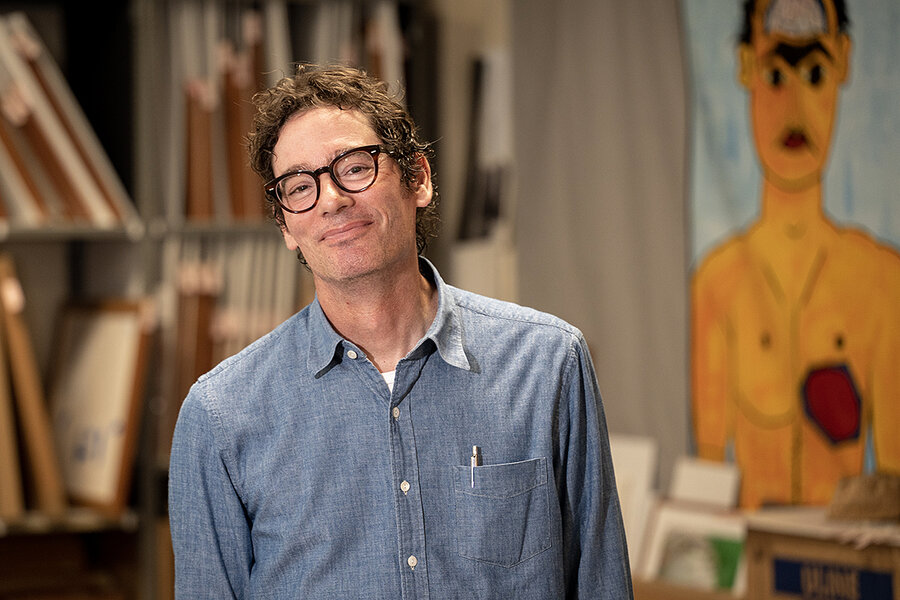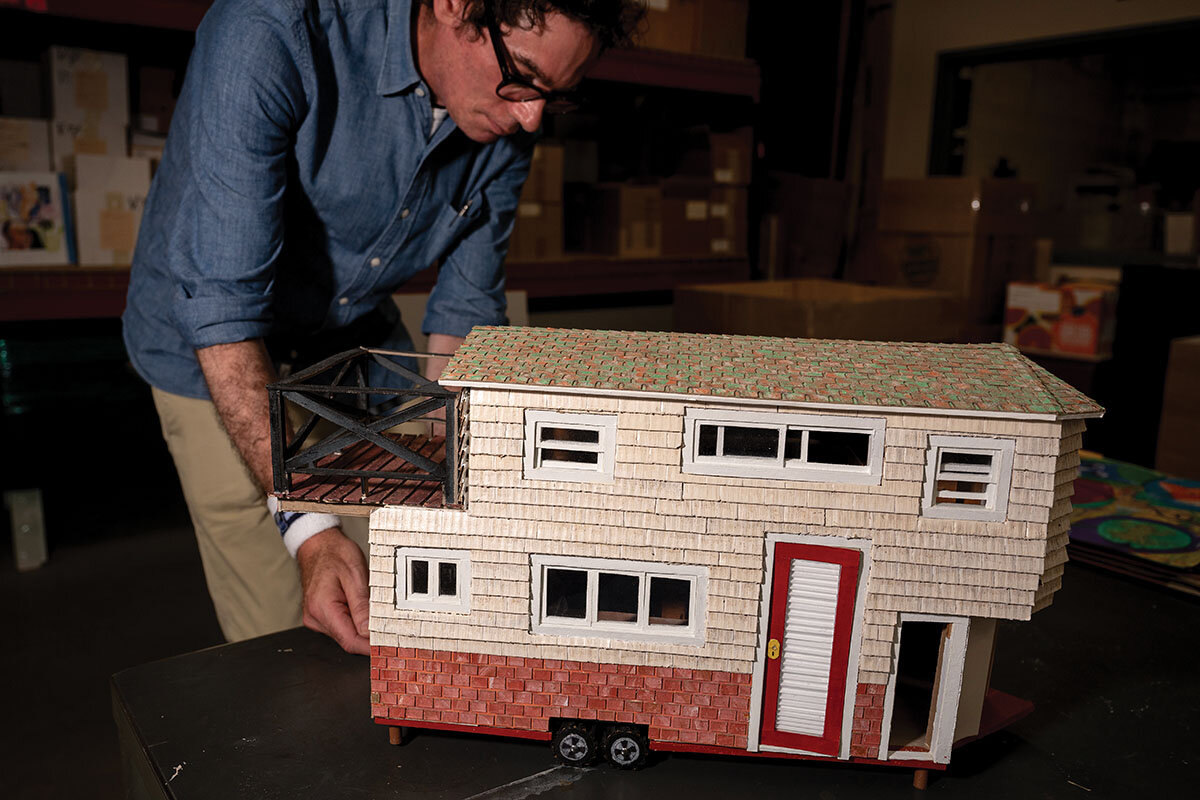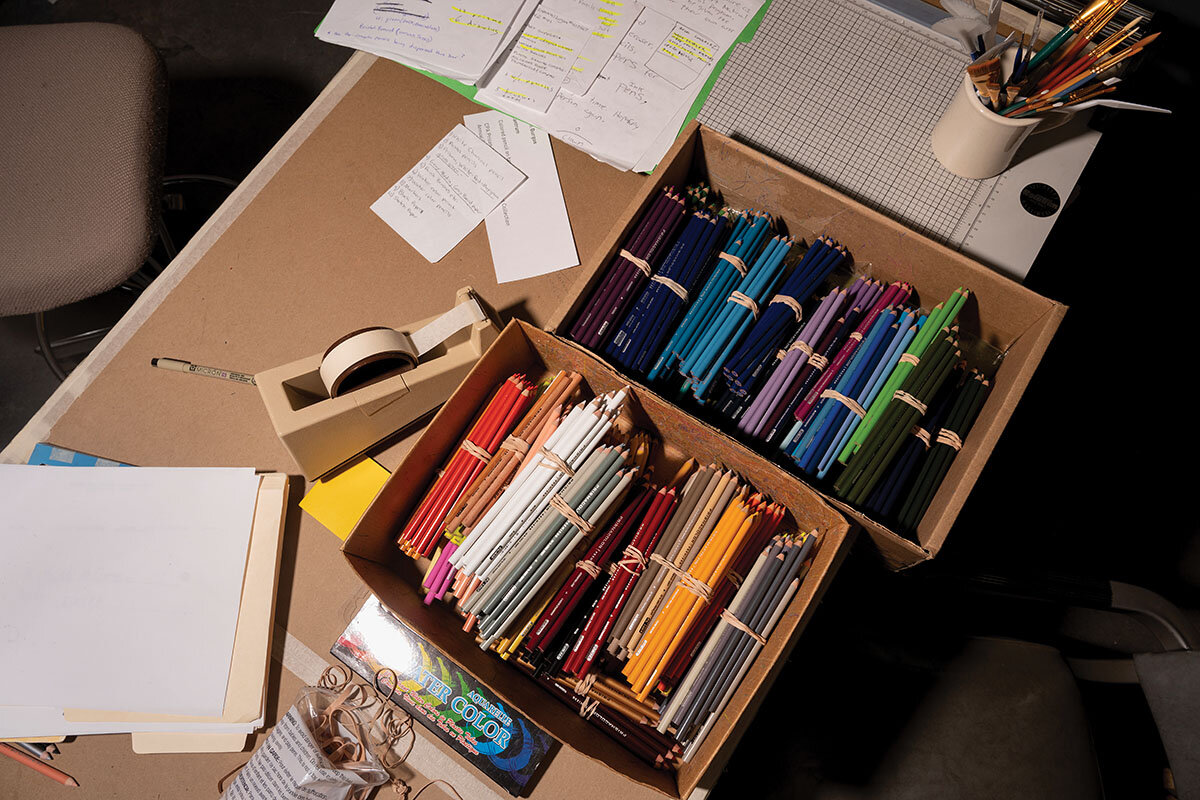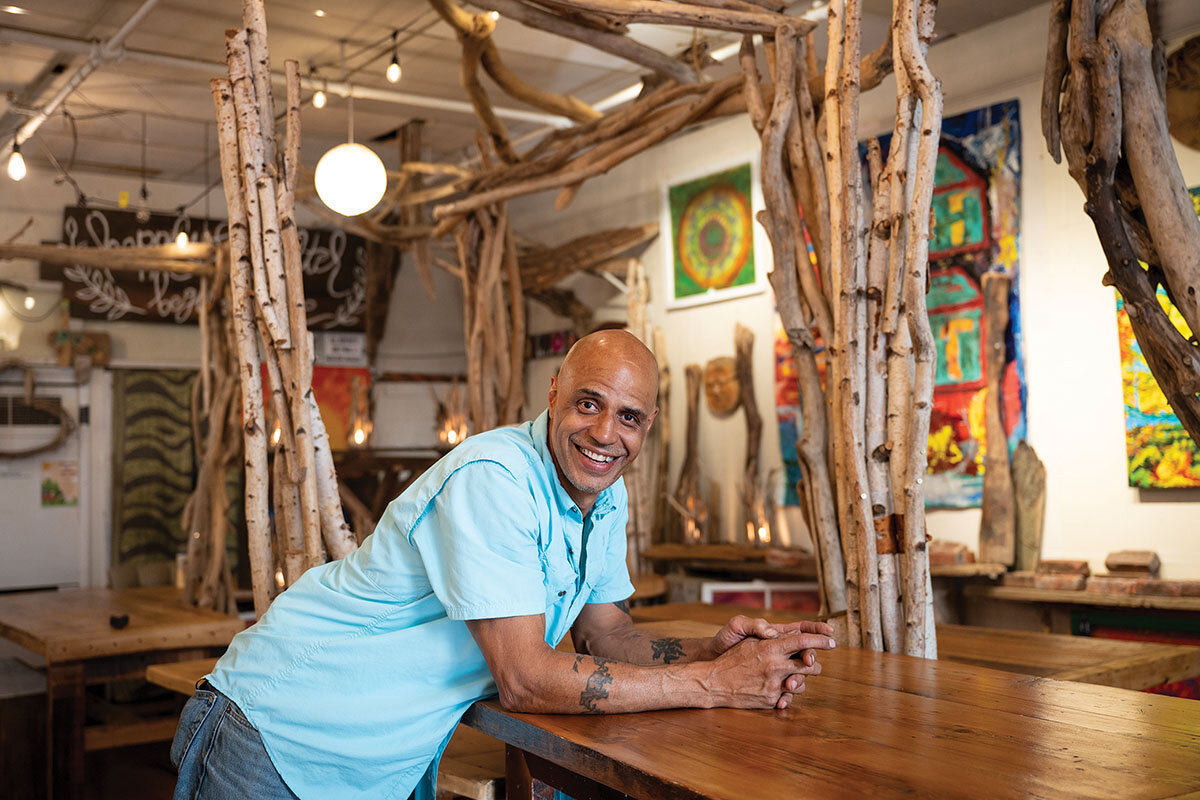Where art mends lives, behind and beyond bars
Loading...
| Hartford, Conn.
On a long table, Jeffrey Greene prepares bundles of colored pencils for delivery to Connecticut state prisons. Artists have jotted their requests on slips of paper. “White charcoal pencil,” reads one, which also lists pencils in red, may green, and grass green.
Finished artwork lines the shelves of this airy warehouse, home to the permanent collection of the Prison Arts Program. Mr. Greene reaches up to a high shelf and retrieves a model RV, rendered in detail down to the windowsills. The shingles were cut from cardboard with a nail clipper and glued with a mixture of floor wax and nondairy creamer. Another artist unraveled a prison blanket and crocheted the threads into a 3D horse.
The Prison Arts Program has run art classes in Connecticut state prisons since 1978. Mr. Greene, the program’s director and one of the teachers, uses these classes to create space for artistic exploration and open dialogue, helping students grapple with the past and prepare for a future beyond bars.
Why We Wrote This
A story focused onIn some places, inspiration can be especially hard to come by. But even in prison, creativity has the power to change the course of an artist’s life.
Art therapy for incarcerated people can alleviate the mental toll of living in prison, studies show. It’s a benefit Mr. Greene has witnessed firsthand. He has known his students for years, even decades. He can describe the medium they use and the metaphors their pieces convey, and has seen how the artistic process helps students deal with issues like depression, anxiety, and post-traumatic stress disorder.
“Art unsettles habitual modes of thought and gives you the opportunity to think differently,” says Robin Greeley, professor of art history at the University of Connecticut. “It can disrupt your whole routine and can create a sense of wonder.”
“Incredible empathy”
The Prison Arts Program is one of the oldest correctional arts programs in the United States. It’s the longest-running program of Community Partners in Action, a criminal justice nonprofit based in Hartford.
Since Mr. Greene became the arts program director in 1991, he has worked with more than 12,000 incarcerated individuals. This year alone, he is working with 280 artists and more than 60 “alumni” who are no longer in prison but continue to create art.
Mr. Greene never intended to work in the prison system. After graduating from Hamilton College in New York, he volunteered to teach art workshops in prison on a whim. But he’s never forgotten the impression left by his first day on the job.
“Everyone’s developing in this artificial, man-made, absurd, adversarial environment. It’s ridiculous,” recalls Mr. Greene. In his work today, he encourages artists to reflect on their personal histories for inspiration and motivation.
“What drives Jeff really is the ability to show the humanity of the prison, of the people that are incarcerated,” says Beth Hines, director of Community Partners in Action. “They know they can count on him when they get out.”
In each prison he visits, Mr. Greene instructs his students to create art that only exists because they exist. He says it’s about more than finding a hobby while behind bars: “They are people that are coming out into the world with this incredible empathy and curiosity.” Even if they never leave the prison system, he adds, that mindset can have a positive effect on others.
Restoring families
Despite its shoestring budget, much of the funding for the Prison Arts Program is dedicated to postage, as mailing out artwork has become a way for those who are incarcerated to maintain ties.
For years, Natasha Kinion felt like she’d been swallowed alive in prison. “I was guilt-ridden. I was shameful. I was really broken,” she says in a phone interview.
A mother of four who has experienced domestic abuse and substance addiction, Ms. Kinion spent 13 years at York Correctional Institution in Connecticut. There she started making abstract art.
“It took me at least the first six years of my incarceration to really open up and allow the healing process to start,” says Ms. Kinion. “I began doing a lot of therapy in prison. The Prison Arts Program was amazing for me because I was able to draw out my emotions.”
Mr. Greene helped Ms. Kinion send her artwork to her children. Her daughter Mayonashia Jones once received a drawing of a butterfly trying to fly with broken wings. She remembers thinking of her mom and wondering, “Has she always felt like that?”
The packages became their “love language,” says Ms. Jones in a phone interview, and a foundation for rebuilding their fraught relationship. The experience inspired her to pursue a bachelor’s in fine arts.
Since her release in 2019, Ms. Kinion has published a book about her journey, titled “Stand Up You’ve Been Down for Too Long,” and has opened her own digital art company, Dezigning Deztiny.
“I never told him this ... but Jeff is really my hero,” says Ms. Kinion.
New beginning
Danny Killion had little interest in art when he was robbing banks in Connecticut. Then he was caught and sentenced to 12 years in prison. “Prison can be a very cold, hard environment,” says Mr. Killion.
Taking Mr. Greene’s art workshops offered some relief. “Jeff is this 6-foot-5, floppy-haired hipster – so very warm” in comparison, says Mr. Killion. He spent 10 years in the Prison Arts Program, learning to concentrate on the artistic process and find solace in a concrete cell.
“I’ve never met anyone who’s a more profound teacher,” says Mr. Killion, who finished his sentence in 2007. As he found his feet in society, Mr. Greene would drop by, offering art materials and a listening ear.
After working in construction, Mr. Killion began creating furniture using driftwood from the Hudson River. In 2013, he opened his own art studio and gallery, Weathered Wood, in Troy, New York. He traces his transformation back to those first classes with Mr. Greene.
“I don’t know if I would have made it out without that program,” he says.
This year, Mr. Killion unveiled his first public commission, a sculpture of twisted scrap metal depicting a man breaking through chains, installed at Old New-Gate Prison, a historical site in East Granby, Connecticut. Mr. Greene was there too, both men now standing outside prison gates.








